


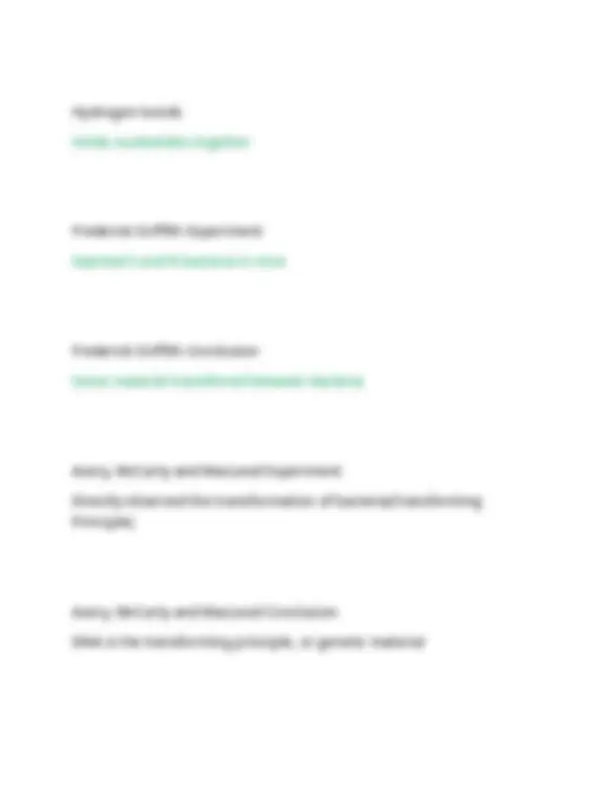
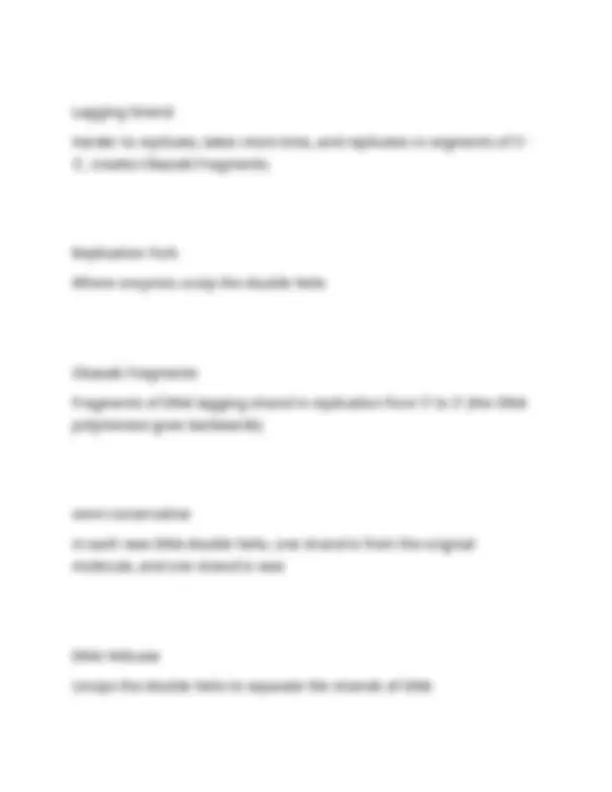
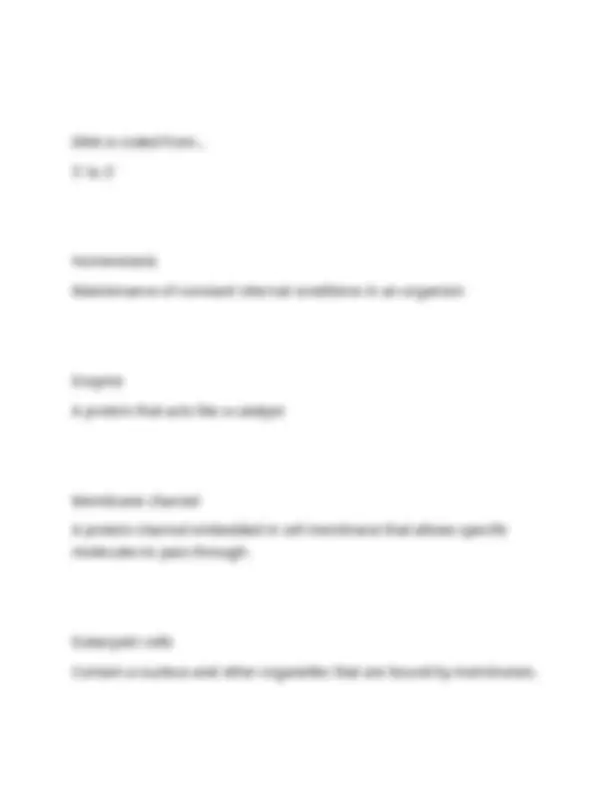
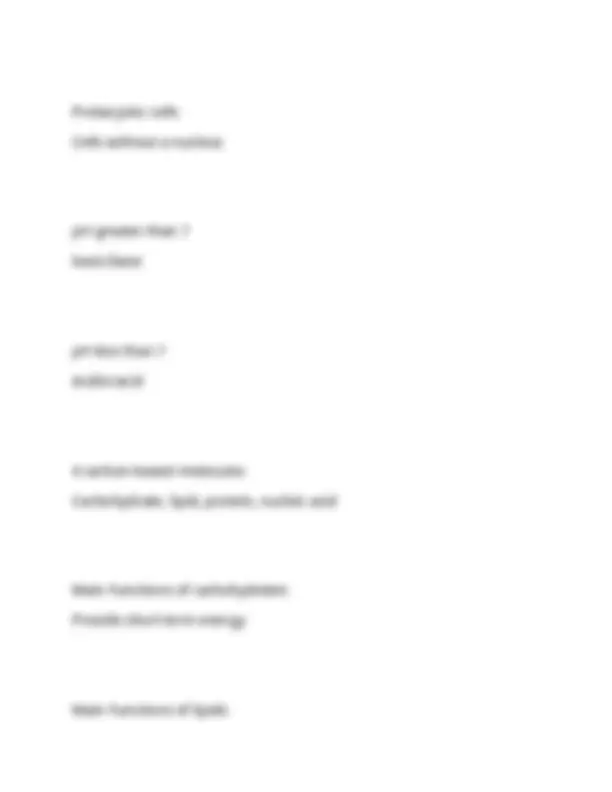
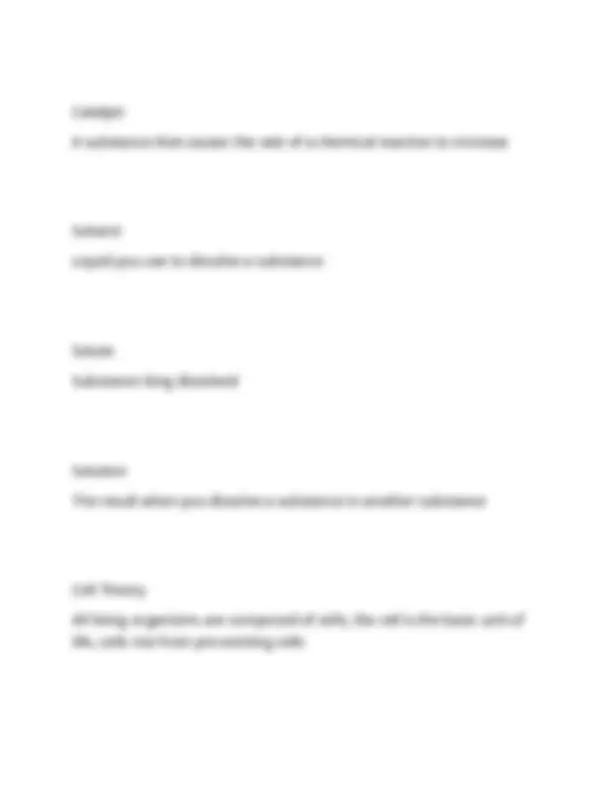
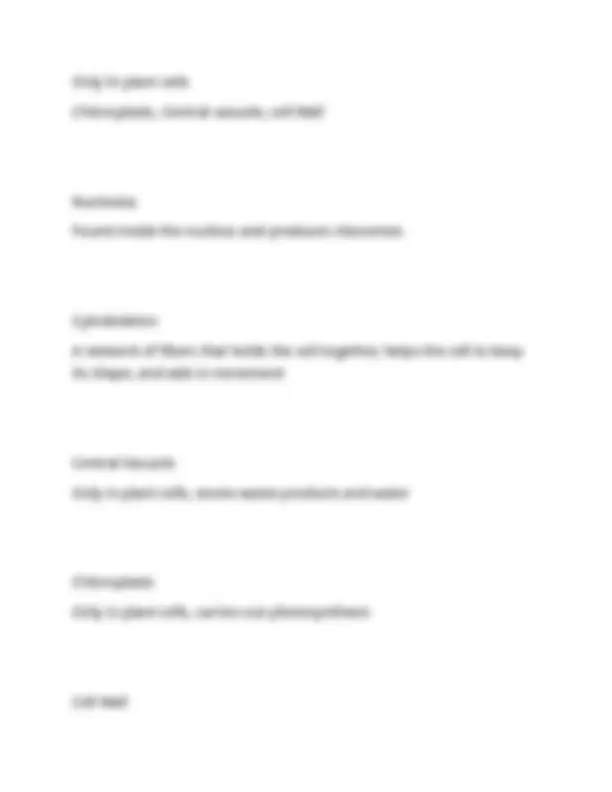
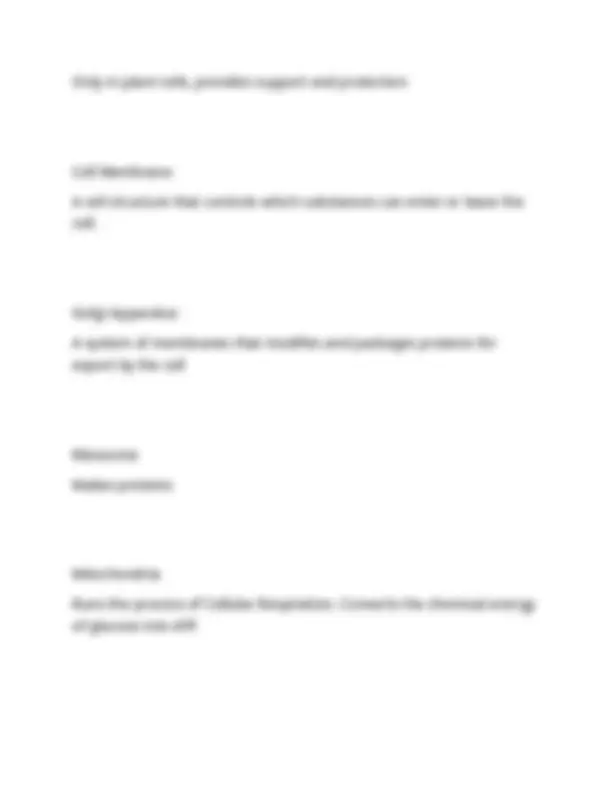
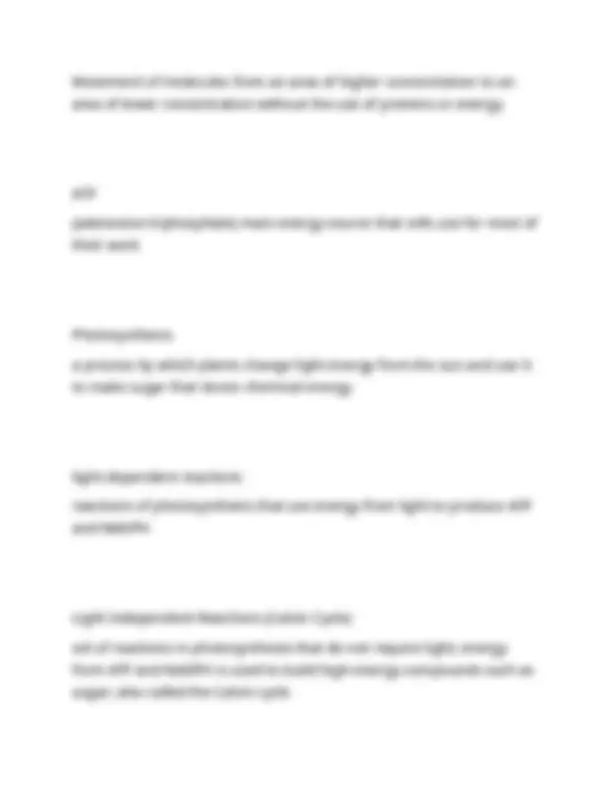
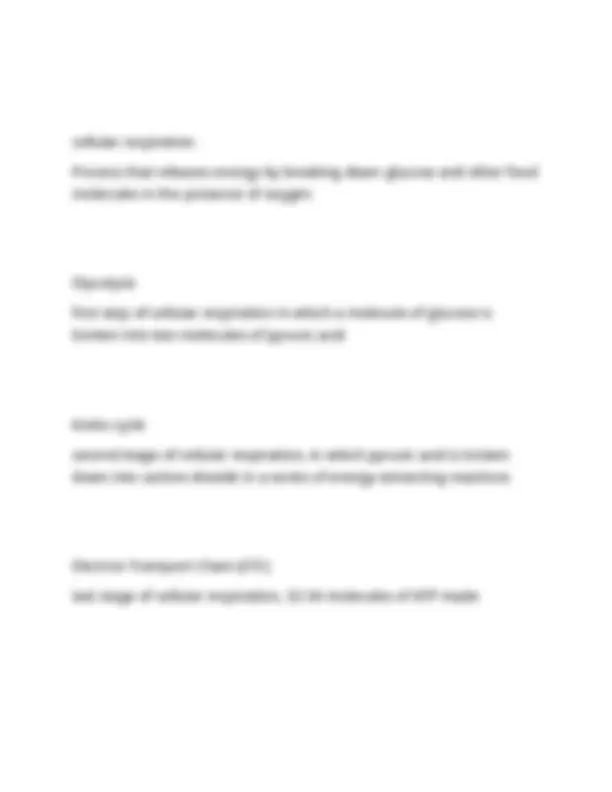


Study with the several resources on Docsity

Earn points by helping other students or get them with a premium plan


Prepare for your exams
Study with the several resources on Docsity

Earn points to download
Earn points by helping other students or get them with a premium plan
Community
Ask the community for help and clear up your study doubts
Discover the best universities in your country according to Docsity users
Free resources
Download our free guides on studying techniques, anxiety management strategies, and thesis advice from Docsity tutors
HONORS BIOLOGY SEMESTER 1 FINAL EXAM REVIEW 2025|QUESTIONS WITH CORRECT ANSWERS |A+GRADED
Typology: Exams
1 / 19

This page cannot be seen from the preview
Don't miss anything!












Central dogma States that information flows in one direction, from DNA to RNA to proteins RNA (ribonucleic acid) A chain of nucleotides, each made of a sugar, a phosphate group, and a nitrogen-containing base Transcription The process of copying a sequence of DNA to produce a complementary strand of mRNA
RNA Polymerases An enzyme that runs transcription by unzipping DNA and bonding nucleotides together in a chain to make a new RNA molecule Messenger RNA (mRNA) RNA molecule that carries copies of instructions for the assembly of amino acids into proteins from DNA to the rest of the cell Ribosomal RNA (rRNA) Forms part of a ribosome, a cell's protein makers Transfer RNA(tRNA) Brings amino acids from the cytoplasm to a ribosome to help make the growing protein Translation The process that converts, or translates, an mRNA message into a polypeptide chain (one or more polypeptide s make up a protein)
Point Mutation A mutation in which one nucleotide is substituted for another; usually caught and fixed by DNA Polymerase, but if not they can permanently change an organism's DNA Frameshift Mutation Involves the insertion or deletion of a nucleotide in the DNA sequence; frameshift mutations often shift the entire sequence following Phosphate group Helps support the DNA structure Deoxyribose sugar Helps support the DNA structure Nucleotides Basic units of DNA molecule, composed of a sugar, a phosphate, and a base
Hydrogen bonds Holds nucleotides together Frederick Griffith Experiment Injected S and R bacteria in mice Frederick Griffith Conclusion Some material transferred between bacteria Avery, McCarty and MacLeod Experiment Directly observed the transformation of bacteria(Transforming Principle) Avery, McCarty and MacLeod Conclusion DNA is the transforming principle, or genetic material
James Watson and Francis Crick Found DNA is double helix, proved Charagaff's base pair rule, and suggested that DNA could be copied Replication The process by which DNA is copied during the cell cycle DNA Polymerase Enzymes that bond the new nucleotides together in replication DNA consists of... Phosphate group, deoxyribose sugar, nucleotides, and hydrogen bonds Leading Strand Is replicated continuously in 5'-3'
Lagging Strand Harder to replicate, takes more time, and replicates in segments of 5'- 3', creates Okazaki Fragments. Replication Fork Where enzymes unzip the double helix Okazaki Fragments Fragments of DNA lagging strand in replication from 5' to 3' (the DNA polymerase goes backwards) semi-conservative in each new DNA double helix, one strand is from the original molecule, and one strand is new DNA Helicase Unzips the double helix to separate the strands of DNA
Prokaryotic cells Cells without a nucleus pH greater than 7 basic/base pH less than 7 Acidic/acid 4 carbon-based molecules Carbohydrate, lipid, protein, nucleic acid Main Functions of carbohydrates Provide short term energy Main Functions of lipids
Provide long term energy Main Functions of proteins Act as enzymes to run cell functions, embedded in membrane to help with transport, and much more. Main Functions of nucleic acids To store and transfer genetic information, to use genetic information to direct the synthesis of a new protein monomers of carbohydrates monosaccharides (glucose, fructose, galactose) monomers of lipids triglyceride and phospholipids monomer of proteins
Catalyst A substance that causes the rate of a chemical reaction to increase Solvent Liquid you use to dissolve a substance Solute Substance bing dissolved Solution The result when you dissolve a substance in another substance Cell Theory All living organisms are composed of cells, the cell is the basic unit of life, cells rise from pre-existing cells
Only In plant cells Chloroplasts, Central vacuole, cell Wall Nucleolus Found inside the nucleus and produces ribosomes Cytoskeleton A network of fibers that holds the cell together, helps the cell to keep its shape, and aids in movement Central Vacuole Only in plant cells, stores waste products and water Chloroplasts Only in plant cells, carries out photosynthesis Cell Wall
Smooth ER That portion of the endoplasmic reticulum that is free of ribosomes. Centriole Cell organelle that aids in cell division in animal cells only Lysosome An organelle containing digestive enzymes Nucleus A part of the cell containing DNA Vesicle A membrane bound sac that contains materials involved in transport of the cell. Rough ER
That portion of the endoplasmic reticulum studded with ribosomes. Functions of Cell Membrane Form a boundary between inside and outside the cell, controls passage of materials Phospholipid bilayer A double layer of phospholipids that makes up membranes. Vacuole Cell organelle that stores materials such as water selective permeability A property of the cell membrane that allows some substances to cross more easily than others. Diffusion
cellular respiration Process that releases energy by breaking down glucose and other food molecules in the presence of oxygen Glycolysis first step of cellular respiration in which a molecule of glucose is broken into two molecules of pyruvic acid Krebs cycle second stage of cellular respiration, in which pyruvic acid is broken down into carbon dioxide in a series of energy-extracting reactions Electron Transport Chain (ETC) last stage of cellular respiration, 32-34 molecules of ATP made